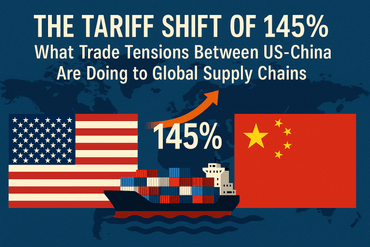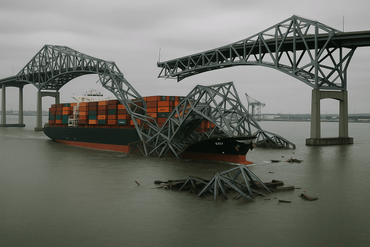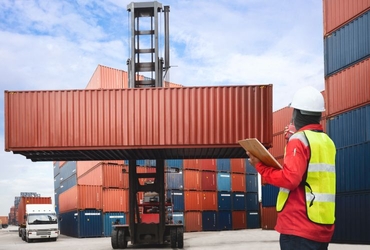
US trucking shortage



What’s causing the US trucking shortage problem?
Even as autonomous trucking tests and trials advance, getting them fully implemented remains very much a thing of the future. Focusing on today, the current trucking situation as such appears to be heading backwards, with a nationwide shortage of truck drivers threatening to throw the entire country’s ocean freight services logistics chain into disarray.
Truck driver shortage in itself is something we’ve been seeing in the US for decades so it isn’t exactly a new problem. For a considerable time now, the industry has faced the lack of new qualified drivers entering while existing drivers switched to distribution jobs. A lot of this comes down to finances. For example, driving a delivery truck for grocery chains may mean that the driver gets to go home every night as opposed to staying on the road overnight all week. The drivers no longer feel as compensated as they did before for the personal sacrifices they make for their jobs. There have also been cases whereby older drivers and/or operators simply decided to sell their trucks and retire following truck breakdown and damages. In short, they deemed it wasn’t worth it to spend the money on repairs and decided to ditch the business.
That said, what’s been the trigger for the ongoing crisis?
ELD implementation
By and far one of the major factors for the current bottleneck is the implementation of the Electronic Logging Device (ELD) in early December. It’s part of a new mandate requiring all truck drivers to install a device that automatically logs driving time, engine hours, vehicle movement, miles driven and location information. This was an industry-wide change which forced all truckload carriers to comply. The only vehicles exempt were truck models older than 2000.
The implementation of this mandate has severely exacerbated truck driver shortage woes in the country. What it has basically done is restrict drivers’ ability to make money. Coupled with the congestion and long wait times at most major ports and rail yards, it’s a recipe for a logistical disaster.
“Drivers want to be on the road. They want to drive and make money on the mileage they cover. Sitting in line at the port does not pay the bills and with ELD regulations, it now means that time spent waiting in line eats away at their driving time.”
-Klaus Lysdal, Vice President of Sales & Operations, iContainers
Unexpected colder winter
The winter season undoubtedly puts more pressure on the trucking market as they’re unable to handle as many moves as usual. For the northern states, this is a seasonal problem. Ports and rail yards close and cause delays but, they’re used to dealing with it and also have experience in preparing for it. But this winter season has also hit the South, and it’s hit them unexpectedly hard.
“The winter hit a lot harder than usual in the South this year and it has caused a lot more damage than expected. Not only was nobody prepared for it but most of the traffic state departments were ill-equipped to handle snow. They simply did not have enough equipment. Roads were also not built to handle the cold. Many roads in the south suffered a lot of damage by the cold, which damaged the trucks and caused more breakdowns and flats. It’s really all interconnected.”
- Klaus Lysdal
Tying all this in with a recovering market and a more active consumer behavior, truckers are simply struggling to meet the rising demand. But the problem appears to be worsening up and down the East Coast. Down south in the Gulf, Texas and Louisiana are also struggling, after an unprecedented number of hurricanes hit the coast.
How the industry is coping
Already, various shipping lines have sent out advisories to customers, warning them of the severe backlog they’re facing and potential delays.
This heat map done by Hapag-Lloyd earlier this month stresses the gravity of the current trucking power situation.
![]()
CMA CGM has also sent out a notice to all its clients, informing them of the areas in which it’s currently ‘experiencing critical truck power issues’. The French liner is urging its customers to consider alternative options in order to help alleviate the problem and mitigate delays. These include:
- Clear cargo at port of discharge vs the inland ramp location. This will allow additional lead time in securing truck power.
- Submit freight payment, original bills of lading and customs clearance as soon as possible. We will continue to ask for a minimum of 48 hours prior to LFDs (Last Free Day) at port or rail. Some markets may require longer notification times due varying truck power availability.
- Submit delivery orders as quickly as possible.
- Provide flexibility in warehouse appointment times and scheduling.
- Terminating door moves at the local port or rail in the event truck power cannot be found.
Trucking industry working its way around
Many drivers are independent owner operators and even though they are contracted under one trucking company, they may jump ship or reject a load at any time if they find something else that pays more or they decide they do not want to do a certain load. Dispatchers often have to negotiate with the drivers to get them to take the loads that the trucking company may have already committed itself to.
For example, a driver who gets assigned with a load with relatively low revenue today may have been promised one with higher revenue tomorrow and the day after. ThIS may be the only way to get the lower revenue loads and relatively low mileage moves covered - by offering high mileage moves in return the following days. But what happens when you mainly have low- to mid-range mileage loads?
The issue with short- to mid-range loads is that it takes the driver just as long to retrieve the container and return it as it does for a long range load. And he would still have to wait while the container is being loaded/unloaded. With the ELD regulations, his driving time could now also expire before he can return the container, meaning that it may mean sacrificing another load.
Many truckers are already doing or starting local runs where one driver delivers and picks up containers from the port to the trucker yard all day long to save the other drivers the wait time. But that puts much more administration work on the truckers’ shoulders. While some have had such setups running for years, others are just now really starting to look into this as a solution.
For the exporter, this means that they may have to push up their load dates to allow for at least one more day to deliver the container to the port, which in itself will add an extra chassis day to their cost and an overall increase in shipping costs.
All this also has an effect on freight forwarders, who are finding it hard to lock down a truck driver to move their clients’ loads. Commitment levels have also fallen, and given the spotty situation, drivers who come through are also becoming sporadic.
“For us, the main issue has been the additional workload that goes into finding coverage for all our truck movements. Just this year alone, we have had several cases where truckers confirmed that a load was good to go in the morning only to cancel a few hours later. In some of these cases, it is entirely possible that the drivers simply decided to take on another load that’s more profitable.”
-Klaus Lysdal
Problem still likely to worsen
As the challenges continue to mount for truckers, capacity is likely to decrease, which means rates will continue to rise. The shortage also means that as a natural market tendency, truck drivers’ pays are expected to rise. This may trickle down as additional costs for suppliers and correspondingly to consumers. And despite the critical situation in which we find ourselves in right now, this problem is still likely to take a turn for the worse.
“So far, rate increases have not been all that significant and probably still quite far from what they can be with the way things are looking at the moment. The current situation is still going to last a while. It will basically get worse before it starts to improve. The pressure on the market right now will probably have to exist for a while in order to facilitate an industry-wide rate increase.”
-Klaus Lysdal
iContainers advice
If you’re planning on importing/exporting to/from the United States now, do keep in mind the following to prevent potential delays:
- Have a Plan C and Plan D. Prepare to have to prioritize certain cargo over others in the event of last minute cancellations and rejections from truckers. A lot of shippers are now facing the dilemma of either shipping only the bare minimum or paying exorbitant trucking prices to secure truck drivers.
- Get your cargo prepared much more in advance and have a flexible sail date. You may have to jump at whatever opportunity that arises to get your cargo trucked. This also gives you more cushion time to play around with so it’s not logistically too tight on your supply chain.
- Consider rerouting your cargo. Exporters should start thinking about using other ports when rerouting cargo even if they’re farther away. Given the current situation, it may be more reliable to route your cargo via a port where the gating process works smoother, thereby allowing truckers to enter even at night instead of a compact eight-hour period in the day. Even though this means a higher cost for having to truck the container farther, you may win out in the long run for having saved yourself delays and their corresponding fees.
Should you have concerns regarding your cargo, do give us a call at +1-830-465-4006 or send us an email at operations@icontainers.com and we’d be happy to help you out.
Related Articles


